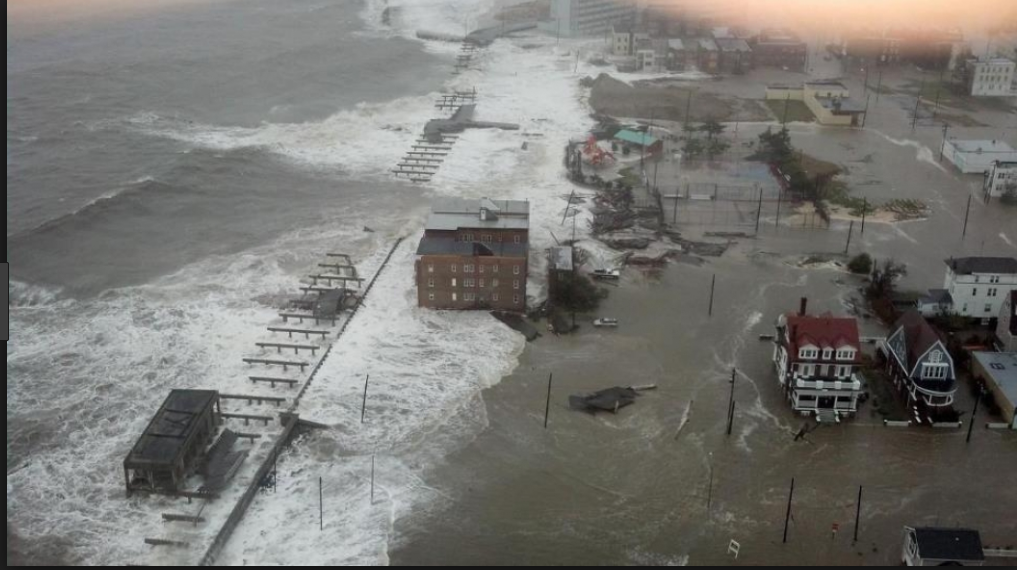The 1,656-page federal government’s report on climate change, called the National Climate Assessment, was mandated by Congress and written by 13 federal agencies and more than 300 scientists and climate experts. You can read the entire report via the link at the bottom of this story, but here are direct excerpts from the part that’s relevant to us. It’s the section on “Climate-Related Drivers of Ocean Change,” dealing with ocean temperature, sea and water levels, and storms. Here are the main points:
“Sea surface temperatures are rising and are expected to rise faster over the next few decades, with significant regional variation, and with the possibility for more intense hurricanes as oceans warm.
“Global average sea level is rising and has been doing so for more than 100 years, and greater rates of sea level rise are expected in the future. Higher sea levels cause more coastal erosion, changes in sediment transport and tidal flows, more frequent flooding from higher storm surges, landward migration of barrier shorelines fragmentation of islands, and saltwater intrusion into aquafers and estuaries.
“Rates of sea level rise are not uniform along U.S. coasts…Along the shorelines of the Great Lakes, lake level changes are uncertain, but erosion and sediment migration will be exacerbated by increased lakeside storm events, tributary flooding, and increased wave action due to loss of ice cover.
“Patterns of precipitation change are affecting coastal areas in complex ways. In regions where precipitation increases, coastal areas will see heavier runoff from inland areas, with the already observed trend toward more intense rainfall events continuing to increase the risk of extreme runoff and flooding. Where precipitation is expected to decline and droughts to increase, freshwater inflows to the coast will be reduced.
“There has been an overall increase in storm activity near the Northeast and Northwest coastlines since about 1980. Winter storms have increased slightly in frequency and intensity and their storm tracks have shifted northward. The most intense tropical storms have increased in intensity in the last few decades. Future projections suggest increases in hurricane rainfall and intensity (with a greater number of the strongest – Category 4 and 5 – hurricanes) a slight decrease in the frequency of tropical cyclones, and possible shifts in storm tracks, though the details remain uncertain.
“Marine ecosystems are being threatened by climate change and ocean acidification. The oceans are absorbing more carbon dioxide as the concentration in the atmosphere increases, resulting in ocean acidification, which threatens coral reefs and shellfish. Coastal fisheries are also affected by rising water temperatures and climate-related changes in oceanic circulation. Wetlands and other coastal habitats are threatened by sea level rise, especially in areas of limited sediment supply or where barriers prevent onshore migration…
“None of these changes operate in isolation. The combined effects of climate changes with other human-induced stresses makes predicting the effects of climate change on coastal systems challenging. However, it is certain that these factors will create increasing hazards to the coasts’ densely populated areas.” Read the report here:
https://nca2014.globalchange.gov/report#section-1947




